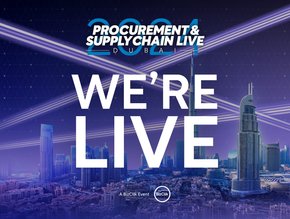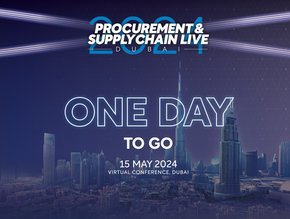Managing the impact of political uncertainty, climate change and digitalisation in the supply chain

Becoming more connected may be opening up fantastic new opportunities, but it is also exposing organisations of all sizes to adverse events they previously wouldn’t have had to worry about. From extreme weather events, to political and market uncertainty and cyber-attacks, it doesn’t matter where you are located – with many businesses requiring ever more complex supply chains, an event doesn’t have to be particularly big for it to disrupt vital operations.
The Japanese earthquake and Thailand floods in 2011, the NotPetya cyber-attack of 2017 and increasing political uncertainty are prime examples of how apparently localised events can have far reaching consequences for global supply chains.
It’s not just the primary impact that these events – natural or man made – have, but the cascading ripple effect throughout the entire supply chain. At the same time, industries are changing, with established players having to contend with competition from digital entrants, whether they’re start-ups capitalising on low barriers to market entry, or the Google, Apples and Amazons of the world diversifying into new areas at a tremendous pace.
Growth despite risks
That said, many businesses in the UK are looking to grow, with 68% of respondents to a Vuealta survey saying they were looking to expand into new markets. Emerging economies hold immense potential, whether as new sources of customers or of production. Yet they also hold significant risk, from requiring a longer supply chain to local political uncertainty. That said, confusion in governments closer to home can cause problems too - 49% of UK companies felt that Brexit uncertainty had negatively impacted their supply chain in the last 5 years.
Added to this is the complexity of modern logistics. Interconnected, multi-layered and often unwieldy, a modern supply chain can cover half the world, taking in primary, secondary and tertiary manufacturers and producers, freight companies, ocean terminal and airport operators, along with dozens of parties in between. Over half (58%) of the organisations Vuealta spoke to had five or more companies in their supply chain, with 14% having more than 50.
It all adds up to more links which can be broken, more pieces which can be disabled and the potential for more disruption by outside forces. So, what can businesses do to protect themselves against outside forces disrupting their supply chains?
SEE ALSO:
-
Can you sustain the risks of a changing supply chain management environment?
-
Gravity Supply Chain Solutions: Mitigating the risks of trade wars and tariffs
-
NSA, Trusted Computing Group and Intel collaborate to standardise supply chain risk management
Planning around the risks
To know what to do, it’s important to first be aware of where threats are going to come from. Aside from Brexit, disruption for UK businesses’ supply chains was most likely to come from the failure of a single supplier (30%) or spikes in demand overstretching capacity (28%). Cyber-attacks (22%) and natural disasters (19%) were also likely to have disrupted supply chains in the last five years.
Each of those instances have both specific and more general solutions. Direct answers might include mitigating single supplier failure by having multiple sources, while investing in cyber security or having stockpiles would also be applicable where relevant. However, underpinning each of those is a need for clear planning, built upon transparency across the entire supply network and an understanding of how external threats could disrupt operations.
This can only be achieved by what’s known as connected planning. This is where technology draws on data and established plans to enable this transparency in the supply chain and support people to make informed decisions, rapidly. By being able to access and collate critical data sources, businesses can reduce the impact of uncertainty and build realistic, actionable responses to all potential outcomes. As supply chains become more complex, it is only through connected planning that organisations can confidently expand into new markets with the visibility they need to respond to changes or disruption, as they arise.
A connected approach to mitigating disruption
Disasters happen. They are tragic when they do, but the real test of any organisation is how quickly and decisively they can respond.
Preparing for and putting in place clear plans to combat these events can have a dramatic effect on mitigating both the short- and long-term impact. As part of this, being able to model what-ifs, use data to respond in real-time and have transparency across the supply chain are all essential elements for any modern business to succeed.
If businesses in the UK want to realise their expansion ambitions, they need to have that ability to capture, analyse and action intelligence as quickly as possible from across their supply chains. With huge opportunities to succeed for those that can get it right, taking a closer look at managing the supply chain is an essential step for any organisation operating in our complex world.
- GlobalData: Supply Chain Pressure Emerges as Global ConcernSupply Chain Risk Management
- Dun & Bradstreet: Managing the Risks of NearshoringSupply Chain Risk Management
- ASCM Report Reveals Strong Supply Chain Labour MarketOperations
- Global Supply Chains at Full Throttle: GEP Index May 2024Supply Chain Risk Management






